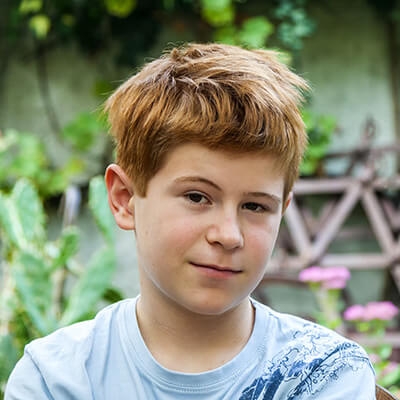enforex_pages_dest_learn_block_a7dd8ed8-2f19-4192-9123-4b0818de3993
enforex_pages_dest_imenu_block_bfe6fc84-a043-4b8b-a7b2-5b81261b1def
 MONTEVIDEO
300
350
MONTEVIDEO
300
350



pages_dest_country_block_8325dd65-db3a-4f6b-84a5-7d8e95276c3c
If surfing is your thing, there's nothing better than traveling to Punta del Diablo, where besides the waves, you will find an authentic fishing village inhabited by artisans. You can also go over to the Santa Teresa National Park, where the colonial fortress of the same name stands, surrounded by beautiful, natural landscapes.
And remember that, even in the unlikely event that Uruguay becomes too small for you, Buenos Aires is just across the Rio de la Plata, or you could also get to know the south of Brazil.
Learn Spanish in Uruguay - Study Spanish abroad

QUICK FACTS ABOUT URUGUAY
Our Spanish School
Uruguay's capital is home to nearly half of the country's population. Montevideo is a vibrant city and the arts are alive and well here, with so much to see and experience in its rich cultural life. Being very safe and politically stable is why, out of all Latin America, it is considered to be one of the best cities to live in. Full of parks, pubs, restaurants, and beaches, and with a great variety of food and music, it is a perfect place to discover the Spanish way of life.
Learn Spanish in MONTEVIDEODiscover Uruguay with don Quijote
If surfing is your thing, there's nothing better than traveling to Punta del Diablo, where besides the waves, you will find an authentic fishing village inhabited by artisans. You can also go over to the Santa Teresa National Park, where the colonial fortress of the same name stands, surrounded by beautiful, natural landscapes.
And remember that, even in the unlikely event that Uruguay becomes too small for you, Buenos Aires is just across the Rio de la Plata, or you could also get to know the south of Brazil.
International Language Camps - Summer Programs in Spain | don Quijote
Spanish summer camps for children and teenagers
A PERSONALIZED CAMP EXPERIENCE
- Choose from 10 different camp locations, in the city or near the sea.
- Choose among three different camp experiences: residential camp, day camp, or our homestay program.
- Language classes: choose to learn either Spanish or English with our 20 lessons per week program.
- We offer a variety of workshops, there is always a new skill to learn or improve.
- Choose among a variety of optional sports: soccer, tennis, paddle tennis, golf, horseback riding, swimming, sailing, and water sports.
- Outside of class, campers get to practice their new language skills with their Spanish friends.
- Our camps combine attractive locations with an effective learning methodology, international friends, diverse activities to choose from, and a thorough Spanish cultural immersion.
WHAT TO EXPECT AT DON QUIJOTE SUMMER CAMPS
Our international camps are designed to provide a true Spanish and international immersion in 8 unique locations. This is what your children can expect from their don Quijote Summer Camps experience:
- Embark on an exciting adventure.
- Learn Spanish in a fast and fun way with our innovative teaching methodology.
- An immersion in a new culture, learning about Spain by sharing their summer camp experience with 60% Spanish campers.
- Make new friends from around the globe. Students representing over 80 nationalities attend our camps every year!
- Stay active during the summer by enjoying a wide variety of sports and activities to make language immersion fun.
- Take part in our exciting optional workshops.
- Visit new places. Every summer we organize over 50 different excursions.
- A safe and healthy camp. 24/7 supervision. Delicious Mediterranean food.
Spanish summer camps for children
STUDENT PROFILE
Children from various countries such as the United States, Germany, France and Italy, among many others, participate in our holiday camps for children. The ages in these children's camps are between 5 and 11 years old. International students will enjoy a complete immersive experience thanks to their Spanish classmates, who make up at least 50% of the student body.
ADVANTAGES
At don Quijote we have camps designed exclusively for the youngest. In them, the little ones will enjoy fresh air and days at the beach in a safe environment specially adapted for them.
Our teachers and monitors have a lot of experience with the smallest campers.
In addition to the classes and experiences with their classmates, they will be able to do various sports according to their tastes thanks to our first-class facilities such as tennis courts, swimming pool, sports center, soccer field, volleyball, basketball court, and handball court.
Spanish summer camps for teenagers
STUDENT PROFILE
Our teen camps are designed for ages between 13 and 18. The Spanish classes are adapted to the different levels of the students, ranging from a basic level (A1) to a higher level (C2). International students will enjoy a complete immersive experience thanks to their Spanish classmates, who make up at least 60% of the student body.
ADVANTAGES
Thanks to the wide variety of nationalities that make up our international summer camps, we offer a very diverse environment in which students experience authentic language immersion while broadening their horizons. Every year our campers live an unforgettable experience while developing their skills through workshops, activities, projects, excursions... The project-based methodology with which they learn Spanish makes young people take even in charge of their training. From experience, we know that this method is extremely fun, interactive and appropriate for the development of classroom participation.
Students aged 15 and over will be able to enjoy unsupervised outings, with the "Permission to leave the camp" completed and signed by their parents before the start of the program.
Other Spanish courses
enforex_pages_related_block_ba0a7e6b-17c3-4b50-aa62-65eeb74998f3
enforex_pages_inner_three_block_812b4b0c-cf7e-4e1a-b6d7-e3cb08d653cc
A PERSONALIZED CAMP EXPERIENCE
- Choose from 10 different camp locations, in the city or near the sea.
- Choose among three different camp experiences: residential camp, day camp, or our homestay program.
- Language classes: choose to learn either Spanish or English with our 20 lessons per week program.
- We offer a variety of workshops, there is always a new skill to learn or improve.
- Choose among a variety of optional sports: soccer, tennis, paddle tennis, golf, horseback riding, swimming, sailing, and water sports.
- Outside of class, campers get to practice their new language skills with their Spanish friends.
- Our camps combine attractive locations with an effective learning methodology, international friends, diverse activities to choose from, and a thorough Spanish cultural immersion.
WHAT TO EXPECT AT DON QUIJOTE SUMMER CAMPS
Our international camps are designed to provide a true Spanish and international immersion in 8 unique locations. This is what your children can expect from their don Quijote Summer Camps experience:
- Embark on an exciting adventure.
- Learn Spanish in a fast and fun way with our innovative teaching methodology.
- An immersion in a new culture, learning about Spain by sharing their summer camp experience with 60% Spanish campers.
- Make new friends from around the globe. Students representing over 80 nationalities attend our camps every year!
- Stay active during the summer by enjoying a wide variety of sports and activities to make language immersion fun.
- Take part in our exciting optional workshops.
- Visit new places. Every summer we organize over 50 different excursions.
- A safe and healthy camp. 24/7 supervision. Delicious Mediterranean food.



